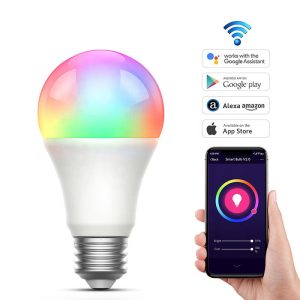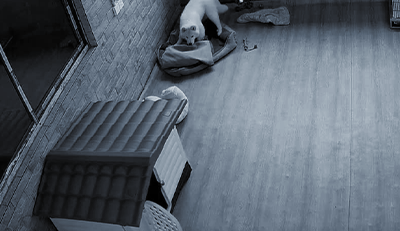00 items

17
Mar
4G cameras VS Wi-Fi cameras
If you have great 4G signal but no Wi-Fi, then 4G security cameras are exactly designed to meet your security needs, especially in remote areas without Wi-Fi or power.
4G LTE security cameras, are mobile cameras that use the 4G LTE network to deliver live viewing and send instant alerts.
They require a separate mobile service plan to work and the amount of data consumed depends on how often you watch live streaming and receive motion detection alarms.
Other advantages of 4G outdoor or indoor security cameras:
- You can easily add more 4G cameras in your desired locations, without any contracts or subscriptions
- They can function as normal even in power outages.
- No wires as the battery powered or solar powered 4G security cameras. Not only is this more tidy, it saves cost of maintenance of the building as walls do not need to be drilled etc.
- Ease of installation and repositioning as they are plug and play.
- They can anywhere within a 4G network. Affordable. As more security camera suppliers enter the 4G camera field and compete for market shares, the price of 4G security cameras has declined than ever before.
In summary, 4G security cameras are well suited for isolated places with no internet or power sources available, such as your remote farms, boats, vacation homes and campsites etc.
What to consider when selecting a 4G security cameras
- Powering options: Most are powered by rechargeable batteries, but some offer the option use a solar panel for continuous power.
- Cost: Always an important factor for the camera unit. It is worth finding out costs for cloud storage too.
- Recording options: Cameras with sd card slots are suitable for those who do not want to pay for cloud storage.
- Motion detection and notifications : Ensure any notifications are relevant and helpful as too many will take up data quickly. Adjust the motion sensitivity accordingly.
- 4G reception: This needs to be reliable and good enough to stream a live feed or send instant alerts. A weak signal will take too much time to and will still use data.
- Night vision: This will allow you to keep you informed even when it is dark
- Resolution: 4K will offer greater clarity to read details such as license plates.

Other advice
Most 4G security cameras don’t support Wi-Fi. If the area you are monitoring does has Wi-Fi, it will be more economical to use this than a 4G camera.
Some cellular data plans of 4G wireless security cameras offer a fixed number of minutes of videos per month. To make best use of these minutes, you can reduce false alarms and useless motion-triggered recordings or lower the 4G camera resolution or frames per second.
You need to get a SIM card from the supported mobile network service providers and one sim card has to be assigned to each 4G camera. Free SIM card with purchase of ROUOM S1.But you can consult your local cellular carriers whether they would have a bundle package deal on more than one 4G wireless security camera.
4G data usage for a 1080p security camera
| Scenario | Bitrate | Time | Data usage |
| Hibernate/sleep mode | ≈0Mbps | 1 day | 5MB |
| Occasionally watching live stream | 1Mbps | 1 hour per 1 day | 0.25GB-0.45GB |
| Continuous watching live stream | 1Mbps | 24 hours per 1 day | 5GB-10.5GB |
| Playback video clips from microSD | 2Mbps | 1 hour per 1 day | 0.5GB-0.9GB |
| Playback video clips from microSD | 2Mbps | 24 hours per 1 day | 10GB-21GB |
| Cloud Storage | 1Mbps | 1 hour per 1 day | 0.25GB-0.45GB |
| Cloud storage | 1Mbps | 24 hours per 1 day | 5GB-10.5GB |

4G security camera in hibernate/sleep mode: Under hibernate mode, the 4G camera will consume a some data. This is because the camera needs to communicate with the remote server and informs it that it is working alive. The camera consumes approximately 5Mb cellular data per day under this mode.
Remote live view: When users remotely watch the live stream, this will use the most cellular data. The used data increases with camera’s bitrate and bitrate encoding method (VBR, CBR). Watching a live stream from a smartphone will use the data plan of your camera, not your cellphone. Security cameras support dual stream technology that offers main stream (the maximum video resolution of camera) and sub stream (the minimum video resolution) simultaneously. A 1080p camera’s bitrate in main-stream/HD resolution is typically 2Mbps, 1Mbps in standard resolution/sub-stream. Watching live stream of your camera will use around 0.9GB per hour (2Mbps/8 x 60 x 60 = 0.9GB), under sub-stream/standard resolution this will be around 0.45GB per hour.
Data consumption used by Cloud Storage: If your 4G camera supports cloud storage data to upload video clips to the cloud will be used.
Playback video clips from memory card via App: Playing back the video from the memory card of the camera will also consume cellular data. Normally the video will be stored in the memory card in mainstream. The data consumption will be as the same when watching live streaming.





